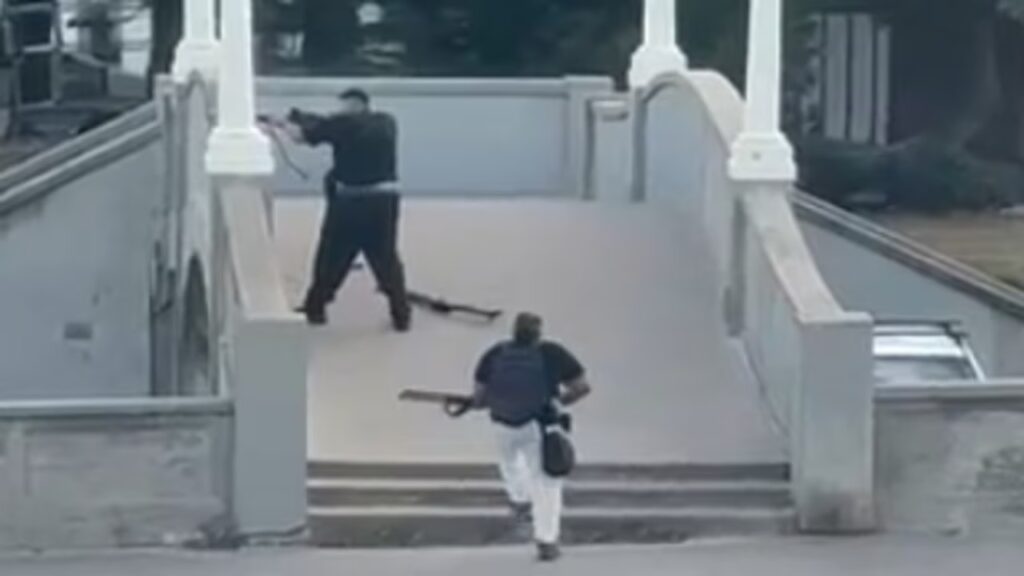UPDATES
Welcome to Sderot, a resilient town that won’t be bowed
September 5, 2014 | Ahron Shapiro

Just over a week after Hamas agreed to an Egyptian-brokered ceasefire plan, bringing an end to over two months of rocket attacks and drawing to a close Israel’s 50-day Operation Protective Edge, life for residents of southern Israel is slowly returning to normal.
On Wednesday, I visited the southern Israeli town of Sderot, which in this war, as in previous escalations, bore more than its fair share of the attacks launched from Gaza.
This border town – the perimeter of which is less than a kilometre from the Gaza border fence – regularly endures something that most people living in the Western world could scarcely imagine, with thousands of rocket and mortar attacks over the past decade, each leaving residents with just 15 seconds to find shelter.
Last Sunday, in consideration of the unique challenges facing Sderot and its neighbouring agricultural communities, the Israeli Cabinet approved an infusion of US $364 million towards its strengthening and development.
Yet beyond the conflict, Sderot – with a population of around 24,000 as of 2011 and since growing – remains an inspiration to all Israelis. In the aftermath of Operation Protective Edge, this visitor was struck by the resilience of the community. It would seem that after two months scurrying to and from their bomb shelters, residents were eager to spend more time outside.
In a playground not far from the town centre, two giant, hollow concrete snake-like sculptures curled through the park – artistically designed play spaces designed to be bomb shelters. Steps away, Yisrael, a religious man, watches his pre-adolescent children playing on the slides. He said his family had lived in Sderot for about five years and raised their children there.
For the past two months, he said, the family slept as one in their home’s reinforced room. All homes in Sderot now have this, since there would be no time to escape to a shelter outside the building (the older buildings in town were retrofitted with such rooms in recent years using government grants).
Rocket attacks in Sderot have always been irregular and unpredictable, he said, and this was true during the war, when volleys of rocket attacks might be spaced closer together or further apart on any given day.
“It’s pretty scary when a Code Red alarm goes off when you’re outside and there’s nowhere to run to,” he said.
As for the outcome of the war, “I’m glad that the ceasefire is in effect. We can breathe easier now, but maybe it’s unfortunate that Israel didn’t give Hamas a stronger hit.”
When asked if he meant that it would have been better if the IDF had recaptured Gaza entirely, he shook his head no.
“I’m not in favour of reconquering Gaza but maybe it would have been better to try to hit Hamas harder,” he said.
When asked about reports of some people in Sderot going to a viewpoint on the edge of town during the war to observe Israeli air strikes on Gaza from afar, Yisrael said there certainly weren’t many who did that. He added that he felt such voyeurism during the war was “pretty stupid”, and that most residents felt as he did.
Walking through post-war Sderot can be a surreal experience. Rocket damage was generally repaired extremely quickly – even during the war itself, although there was nothing to prepare me for the surprise of stumbling across the stark damage on a rocket-struck building for the first time.
Only up-close did I appreciate the lethal and destructive force these rockets have. Hitting this particular building – luckily an unfinished residence – the rocket punched clean through the outer wall and, inside, crumbled two others.

Leftover shrapnel marks on buildings were also easy to spot scattered in neighbourhoods throughout the town. As dusk approached, I asked some local kids to direct me to where I could find more rocket damage, and they were happy to show me.

A word about the children of Sderot. These children of the bomb shelters are, unsurprisingly, under tremendous stress and have been documented over the years as suffering widespread symptoms of emotional trauma.
Even so, for all their fears, they still know how to play and be kids. A group of Israeli children mostly from Ethiopia – none to my eye over the age of 10 – gathered around me in curiousity and asked me to photograph them for this story.

I asked them where rockets had fallen in their neighbourhood in their memories. They pointed out at least four impact sites just within sight of where we stood.
They also advised me where the closest and most recent rocket had fallen, and with time running short, I went off to investigate.
Within two minutes I was standing near a shallow crater etched into the middle of a street. A car parked nearby had had its windows shattered and tires punctured by the force of the blast. The wall of an adjacent building was scarred with shrapnel. I took some pictures and started to walk away, but the owner of the house motioned to me from a window and asked if I wanted to look inside. At first I didn’t understand because the rocket had clearly struck the pavement and it appeared to me that all the damage was visible from the street.
She opened what appeared to be a two-room studio rental flat that faced the street near the impact site. I then met the tenant, as he was home. What I saw inside was jaw-dropping. Shrapnel had penetrated through the metal door and carried on straight through all the walls of the house, perforating the entire flat. Clearly the tenant had not been inside when the explosion occurred, because he certainly would have been killed.
I asked the landlord when the explosion had taken place. “Just the other day,” she said in Hebrew. “It was just about the last rocket of the war.”
I asked her if she had something she would like me to include in my report. “Tell Australia that Sderot is suffering,” she said. “Also that the money the government gives homeowners to repair their homes from rocket damage isn’t enough.”
On my way to the bus stop back to Jerusalem, I passed three locals – a woman and two men, all in their early twenties – sharing a nargila ( a water pipe) and chatting on their stoop outside what appears to be a public housing project. I stopped and asked them how long they’ve lived in Sderot.
“All our lives. Over twenty years,” they told me. One of the trio, they added, had just come back from serving with the paratroopers in combat in Gaza itself.
At that moment, I found myself trying to picture the thousands of Code Red alerts that Sderot had endured over the years. These young people had grown up with all of them.
After a long pause, I asked them: “Why do you stay.”
“We don’t want to leave,” the woman said, a bit miffed. “We don’t like the rockets, but when they aren’t falling, we like living here.”
“Let me ask you something,” the demobilized soldier burst in after her. “If rockets were falling on your homes in Australia, would you just take the abuse and leave?”
I asked them what they thought the solution was.
“We need a stronger prime minister,” the woman said. When I asked her, as I did for the first couple, whether she agreed with the calls by some on the right to retake Gaza, she also demurred. “What has to be done is we just have to destroy Hamas completely. That’s it.”
With a wave, I walked towards a bus stop, looking back at the friends sharing a drink and smoke on their stoop in the fading light – none of us under any illusions that the calm of one late-summer evening we were all enjoying would last.
In Sderot, ceasefires are always considered temporary, and the next rocket or mortar is never a question of if, but only when.
Ahron Shapiro
Tags: Israel





